Epidural administration of neostigmine-loaded nanofibers provides extended analgesia in rats
- PMID: 25403313
- PMCID: PMC4243326
- DOI: 10.1186/s40199-014-0073-6
Epidural administration of neostigmine-loaded nanofibers provides extended analgesia in rats
Abstract
Background: In this study, neostigmine-loaded electrospun nanofibers were prepared and then their efficacy and duration of analgesic action were studied after epidural administration in rats by repeated tail flick and formalin tests.
Methods: The neostigmine poly vinyl alcohol (PVA) nanofibers were fabricated by electrospinning methods. The nanofibers (1 mg) were injected into the lumbar epidural space (L5-L6) of rats (n = 6). Cerebrospinal fluid samples of rats were collected 1, 5 and 24 hours after injection and then were sampled once weekly for 4 weeks. Free-neostigmine concentration was measured in the samples spectrophotometrically. Rat nociceptive responses were evaluated by repeated tail-flick and formalin tests for 5 weeks after the nanofibers (1 mg) injection. Locomotor activity of rats was measured in the open-field at the same period.
Results: The cerebrospinal fluid concentration of free neostigmine reached 5 μg/ml five hours after injection and remained constant until the end of the experiments. The tail-flick latency of treated rats was significantly (p < 0.01) increased and remained constant up to 4 weeks. Pain scores of the rats in both phases of formalin test were significantly (p < 0.01) reduced during the same periods, Epidural injection of the nanofibers had no effect on locomotor activity of rats in an open-field.
Conclusions: Our results indicate that the neostigmine nanofibers can provide sustained release of neostigmine for induction of prolonged analgesia after epidural administration. High tissue distribution and penetration of the nanofibers in dorsal horn can increase thermal and chemical analgesia duration without altering locomotor activity in rats for 4 weeks.
Figures
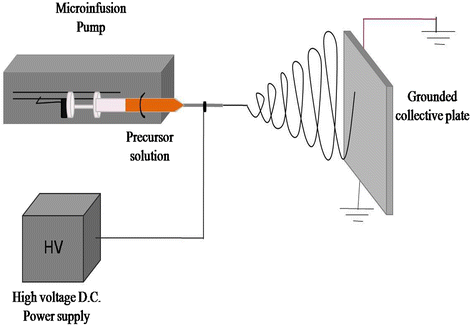

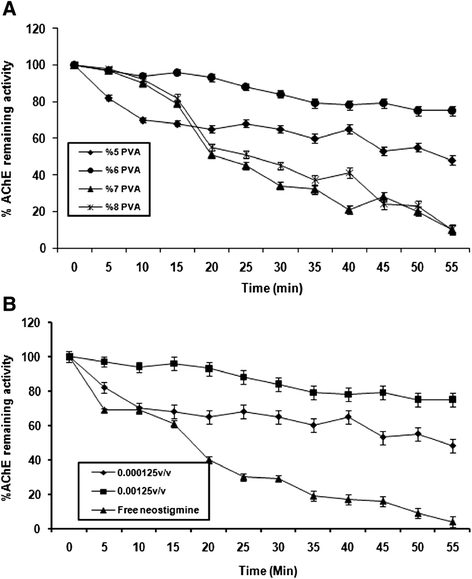
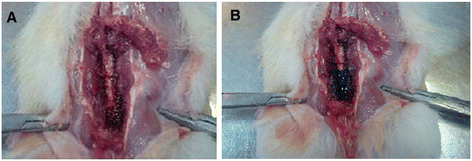

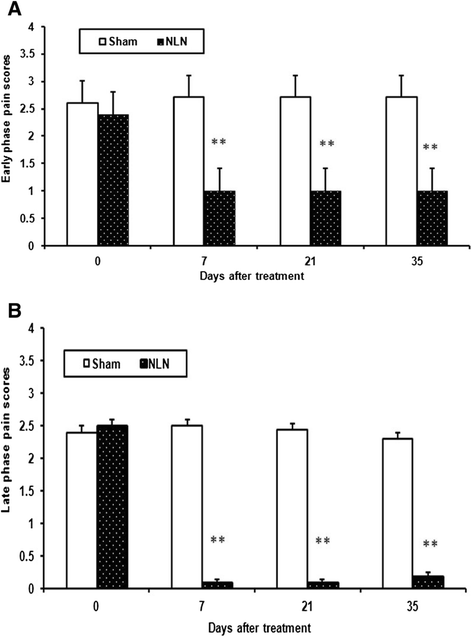
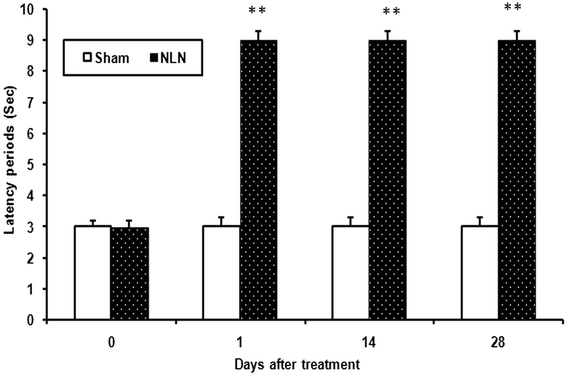

Similar articles
-
Epidural Administration of Curcumin-Loaded Polycaprolactone/Gelatin Electrospun Nanofibers for Extended Analgesia After Laminectomy in Rats.Appl Biochem Biotechnol. 2023 Nov;195(11):6557-6571. doi: 10.1007/s12010-023-04342-y. Epub 2023 Mar 7. Appl Biochem Biotechnol. 2023. PMID: 36881321
-
Intrathecal administration of liposomal neostigmine prolongs analgesia in mice.Acta Anaesthesiol Scand. 2002 Jan;46(1):90-4. doi: 10.1034/j.1399-6576.2002.460116.x. Acta Anaesthesiol Scand. 2002. PMID: 11903079
-
Anti-inflammatory and analgesic activity of novel oral aspirin-loaded nanoemulsion and nano multiple emulsion formulations generated using ultrasound cavitation.Int J Pharm. 2012 Jul 1;430(1-2):299-306. doi: 10.1016/j.ijpharm.2012.03.055. Epub 2012 Apr 5. Int J Pharm. 2012. PMID: 22503988
-
The use of neuraxial adjuvant drugs (neostigmine, clonidine) in obstetrics.Curr Opin Anaesthesiol. 2006 Jun;19(3):233-7. doi: 10.1097/01.aco.0000192812.56161.f8. Curr Opin Anaesthesiol. 2006. PMID: 16735803 Review.
-
[Acute pain measurement in animals. Part 1].Ann Fr Anesth Reanim. 2001 Apr;20(4):347-65. doi: 10.1016/s0750-7658(01)00381-1. Ann Fr Anesth Reanim. 2001. PMID: 11392245 Review. French.
Cited by
-
Epidural Injection Method for Long-Term Pain Management in Rats with Spinal Stenosis.Biomedicines. 2023 May 8;11(5):1390. doi: 10.3390/biomedicines11051390. Biomedicines. 2023. PMID: 37239061 Free PMC article.
-
Epidural Injection of Harpagoside for the Recovery of Rats with Lumbar Spinal Stenosis.Cells. 2023 Sep 15;12(18):2281. doi: 10.3390/cells12182281. Cells. 2023. PMID: 37759506 Free PMC article.
-
In pursuit of functional electrospun materials for clinical applications in humans.Ther Deliv. 2016 Jun;7(6):387-409. doi: 10.4155/tde-2016-0017. Epub 2016 Jun 2. Ther Deliv. 2016. PMID: 27250537 Free PMC article. Review.
References
-
- Greig NH, Utsuki T, Ingram DK, Wang Y, Pepeu G, Scali C, Yu QS, Mamczarz J, Holloway HW, Giordano T, Chen D, Furukawa K, Sambamurti K, Brossi A, Lahiri DK. Selective butyrylcholinesterase inhibition elevates brain acetylcholine, augments learning and lowers Alzheimer beta-amyloid peptide in rodent. Proc Natl Acad Sci U S A. 2005;102:17213–17218. doi: 10.1073/pnas.0508575102. - DOI - PMC - PubMed
MeSH terms
Substances
LinkOut - more resources
Full Text Sources
Other Literature Sources
Medical
Miscellaneous

